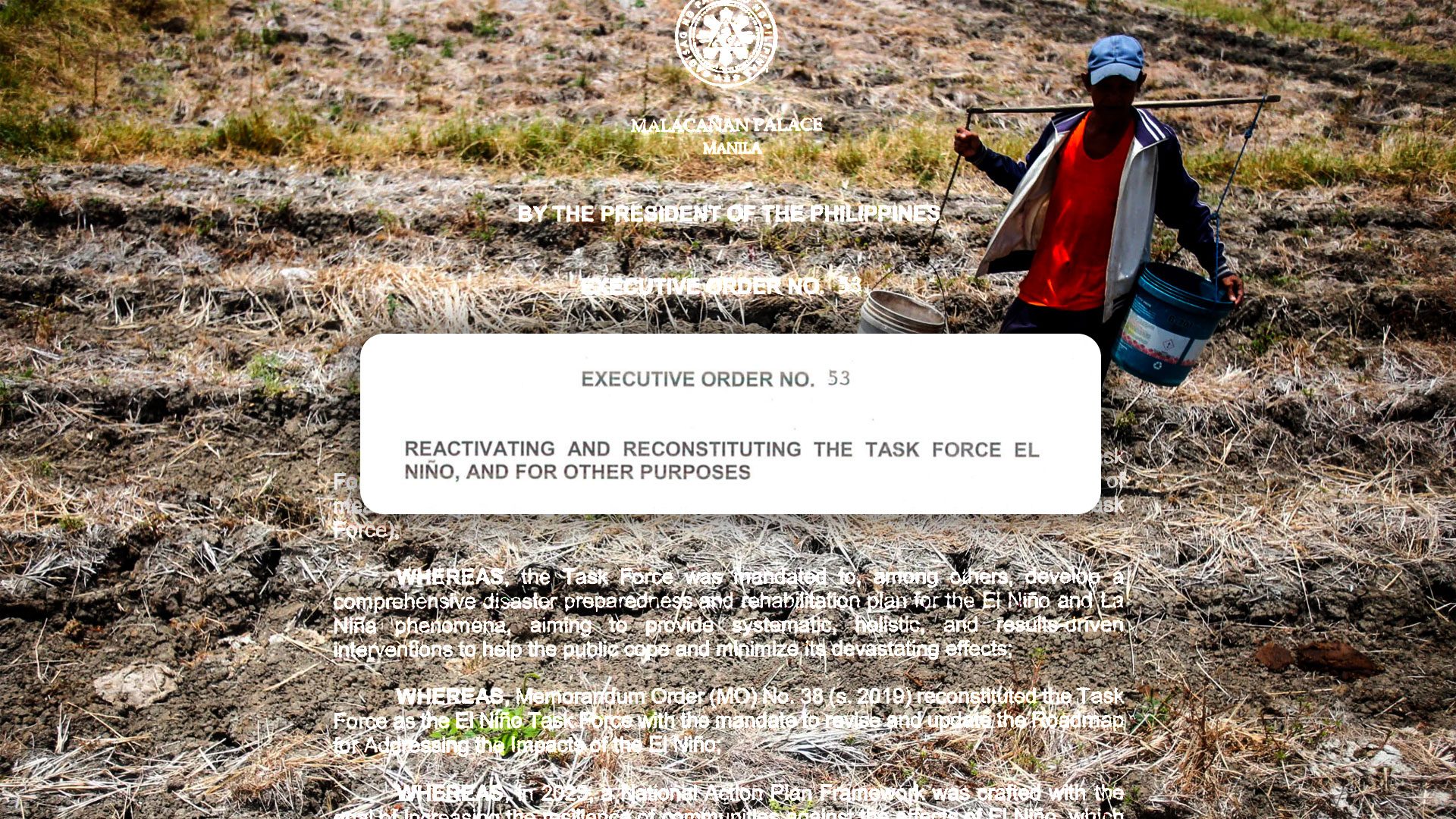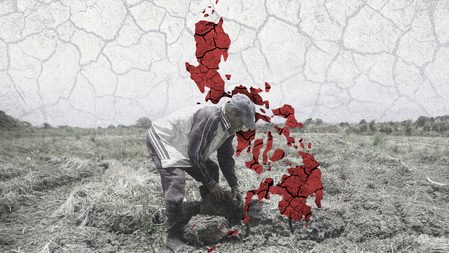SUMMARY
This is AI generated summarization, which may have errors. For context, always refer to the full article.

MANILA, Philippines – A month after President Ferdinand Marcos Jr. announced the reactivation of a task force to address the impacts of El Niño, Malacañang has released an executive order (EO).
Published on January 22, EO 53 pointed out that the reactivation of the task force was in response to calls for long-term solutions, as government monitoring indicated that El Niño would likely last until the second quarter of 2024.
El Niño is a climate phenomenon that is associated with extreme weather conditions. In the Philippines, it usually means below-normal rainfall conditions, resulting in droughts and dry spells.
Malacañang said in December 2023 that, per the Department of Science and Technology, “65 provinces across the country have potential for drought, while there are around six provinces with potential for dry spell.”
Who constitutes the task force?
The membership of the task force is as follows:
- Chairperson: Department of National Defense Secretary
- Co-chairperson: Department of Science and Technology Secretary
- Members: Secretaries of the Department of Environment and Natural Resources (DENR), Department of Health (DOH), Department of Agriculture (DA), and the National Economic and Development Authority (NEDA)
What will it do exactly?
Based on EO 53, the task force’s responsibilities are as follows:
- Update the Strategic El Niño National Action Plan, which is a comprehensive document that lays out the government’s efforts to mitigate the said climate pattern
- Check status of the government’s solutions in areas of water security, food security, energy security, health, and safety
- Be on top of coordination with government agencies to achieve completion of water infrastructure projects by April
- Lead an information campaign on the phenomenon, in coordination with the Presidential Communications Office
- Come up with a monthly report on the task force’s efforts, to be submitted to the President through the Office of the Executive Secretary

How is this different from past Malacañang orders and memos on El Niño?
A provision in EO 53 that was not present in past memos is the creation of a so-called El Niño Online Platform, in coordination with the Department of Information and Communications Technology (DICT).
The document says the platform will “serve as a centralized repository for a wide range of data, research, and information concerning El Niño, such as interactive maps and visualizations, as well as well-informed, data-driven plans and programs related to El Niño.”
The Marcos-era EO also lowers the number of members of the task force to six, compared to more than 12 in the task force constituted under the administrations of Gloria Macapagal Arroyo and Rodrigo Duterte.
– Rappler.com
1 comment
How does this make you feel?




![[Just Saying] SONA 2024: Some disturbing points](https://www.rappler.com/tachyon/2024/07/TL-marcos-sona-points-july-23-2024.jpg?resize=257%2C257&crop=335px%2C0px%2C720px%2C720px)

I appreciate President Marcos Jr. for this action. But it is remarkable that “A month after President Ferdinand Marcos Jr. announced the reactivation of a task force to address the impacts of El Niño, Malacañang has released an executive order (EO).” Why did it take a month to release the corresponding executive order? Is this proof of efficiency in the Marcos Jr. government?